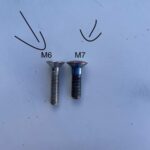Blog
Achieving Peak Performance with Armstrong Performance Masts!

I’m sure you have heard of Armstrong Performance Masts. I am also quite sure you are wondering why on earth you should pay that much more then the regular Armstrong Mast.
I will be discussing the advantages of using the Armstrong performance masts for peak performance, tips for using them, how to choose the right size, and how to install them.
I will also compare the 795mm, 1035mm, and 935mm masts, and give you my opinion on which one you should choose.
Introduction to Armstrong Foils
Armstrong is a leading manufacturer of foiling equipment. Their products are made from the best possible materials and Armie Armstrong, sailer and founder of the brand is a foil-geek himself. I am pretty sure there is no other founder in this industry who spends more hours on the water than he does.
This gives Armstrong a great advantage as foiling is all about the feeling of flying and design differences as much as tenth of millimetres can have a big impact on the foiling experience. Meaning the more you test, the better you understand how design correlates to the foil experience, the better products you are able to create.
Another great advantage of Armstrong is that their roots are in New Zealand. Because NZ won the America’s cup in 2017, they were able to set the boat-designs for the 2021 race. They chose to design a boat with a hydrofoil underneath it.
Because of this, 10’s maybe 100’s of millions of dollars were invested in R&D that Armstrong could somehow benefit from.
Advantages of the Performance Masts
The regular V2 masts like the 85cm still are great masts and probably the better choice for most new foilers.
Why then opting for a performance mast?
We wanted to develop a new, innovative, ultra high-performance mast that minimizes drag and ventilation while also being stiffer and even more responsive.” – Armie Armstrong
The result is a top of the line mast consisting of top shelf materials, new mast section, refined baseplate, reduced drag fuselage connection and new construction method. Proprietary titanium M7 mast top hardware follows suit with a strong, light and drag reducing connection to the board.
Translating these ambitions and promised outcomes into foiling and you should experience:
- smoother pumping
- faster speeds
- quicker on foil
- better upwind riding
Did Armstrong deliver on these promises?
checkout this video to see what Oskar says about it:
How to Choose the Right Mast Size
This really depends on the foiling disciplines you are going to practise.
According to Armstrong thy recommend the following:
1035MM:
- KITE
- WING (HIGHWIND/RACE)
- TOW (SURF XL)
935MM
- WING
- TOW SURF
- KITE
795MM
- PRONE/SURF
- SUP
- WAKE
- WING
- DOWNWIND
My advice would be:
If its surf or supfoiling take the 795MM
If you are into surf, sup and wingfoiling and like to use one mast go for the 795MM
If it’s mainly wingfoiling go for the 935MM
If its wing and kite foiling go for the 1035MM

All three compared
Tips for Peak Performance with Performance Mast
Once you have chosen the right size mast, there are a few tips you can follow to ensure peak performance. First, make sure to properly tighten the mast. Armstrong advises 8-9nm. I use a small electric tool that goes up to 6nm and so I sort of have an idea how much more pressure I have to give manually with a Torx screwdriver.
Second, make sure to play with different mast positions. Armstrong advises to put the mast 1 cm more to the back then you put your previous mast(s). I however found out that I like it 1 cm more to the front of the board. Playing with different mast positions is therefor the best solution to find your perfect setup.
Finally, make sure you don’t leave your mast uncovered in a hot car or exposed to the sun for long periods of time. The mast is crazy strong and won’t brake but when paying a lot of money for you mast, you want the best for it.
M7 vs M6 screws

M7 vs M6 screws
Installing the Armstrong Performance mast is relatively straightforward. They however included new titanium M7 screws that are thicker but shorter then the usual M6 screws. They also excluded the washers that came with previous masts to save on total weight.
Some boards other then Armstrong boards weren’t able to connect the performance mast to them and so you will have to order larger M7 screws or use the traditional M6 screws (although this is not advisable for a long period of time).
Foiling with the Armstrong performance Mast (my thoughts)

Me foiling with the performance mast in light winds
Like many I was quite sceptical about getting a mast this expensive. After trying it for the first time I lost that thought completely and never want to back to the standard V2.
This is why I love my 935MM performance mast with wing-foiling:
- It feels really smooth. Like butter.
- In bigger waves, the extra length (compared to 72cm or 85cm) is really handy
- I never breach anymore ( I use to breach a couple of times each session)
- The stiffness makes annoying currents less annoying
- I have more time to complete gybes and tacks (because of the length)
Conclusion
In conclusion, the Armstrong performance masts are a great choice for peak performance seekers. People that like to get the most sublime feeling out of each session.
If you are just starting with your foiling passion you won’t really need them.
If you have any questions, plz ask though by tapping the chat or commenting on this post.
Get your performance mast from us.
Lars
